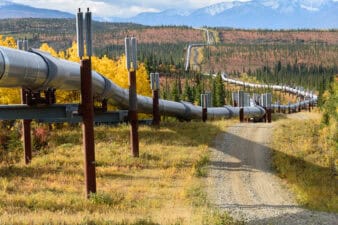Suncor (TSX:SU) and Canadian Natural Resources (TSX:CNQ) are giants in the Canadian energy sector. Oil and natural gas bulls are wondering if SU stock or CNQ stock is undervalued right now and good to buy for a self-directed Tax-Free Savings Account (TFSA) or Registered Retirement Savings Plan (RRSP) portfolio focused on dividends and long-term total returns.
Suncor
Suncor trades near $56 per share at the time of writing. The stock is up about 27% in the past year and isn’t far off the 12-month high.
The positive momentum is largely the result of improved operational and safety results under the new chief executive officer, Rich Kruger, who took control of Suncor in April 2023. Over the past two years Suncor reduced staff and has increased its production while driving solid utilization rates at its refineries.
Suncor’s integrated business structure differentiates the company from its peers, who are pure-play oil and natural gas producers. The oil sands production operations remain the core of the business, but Suncor also operates refineries that turn crude oil into fuels and plastics. Gasoline and diesel fuel are then sold at Suncor’s Petro-Canada retail locations. The downstream businesses can provide a nice revenue hedge when oil prices decline. Refineries benefit from market dips due to the cheaper cost of the commodity. Depending on the timing, the refineries can generate better margins in these situations.
Suncor is starting to win back investors after it surprised the market with a major dividend cut in the early days of the pandemic. The board has since reversed the cuts and raised the dividend to a new high. At the current share price, investors can get a 4% dividend yield.
Canadian Natural Resources
CNRL has underperformed Suncor in the past year. The stock is down about 24% from the 12-month high it reached last April.
Weak oil prices are to blame for most of the pullback. CNRL has oil production operations that include oil sands, conventional heavy oil, conventional light oil, and offshore oil. The company is also a major natural gas producer in western Canada.
CNRL is adept at quickly moving capital around the portfolio to take advantage of changes in commodity prices. This nimbleness, along with a strong balance sheet, is the reason CNRL has been able to give investors a dividend increase in each of the past 25 years.
The company has a strong track record of making strategic acquisitions to boost reserves and production. CNRL’s recently spent $6.5 billion to purchase Chevron’s Canadian assets in Alberta. The board declared a 7% dividend increase for 2025 when CNRL announced the deal. Investors, however, have not warmed up to the acquisition. CNRL took on some new debt to fund the purchase. This has pushed back its timeline for returning more cash to investors.
CNRL stock trades near $43 per share at the time of writing. That’s not far off the 12-month low of around $42 and well below the $56 it reached in the spring of last year. Investors who buy CNRL at the current level can get a dividend yield of 5.25%.
Is one a better pick?
Uncertainty surrounding energy tariffs will likely lead to ongoing volatility in the Canadian energy sector in the near term. Suncor’s integrated structure gives it a hedge against these risks. CNRL, however, is probably oversold right now and offers a better dividend yield. At these price levels, oil and gas bulls might want to consider splitting a new investment between the two stocks.









